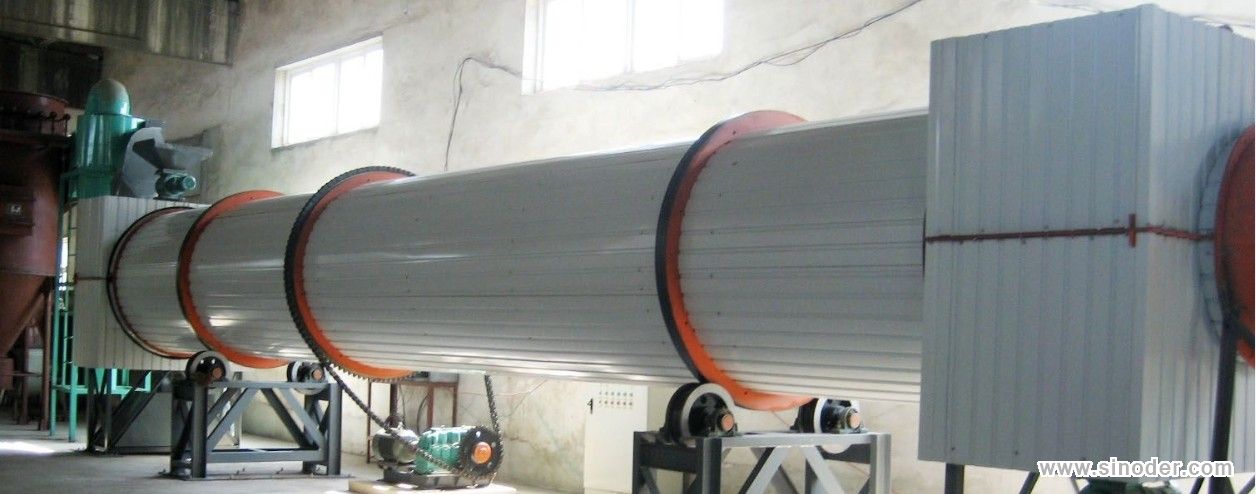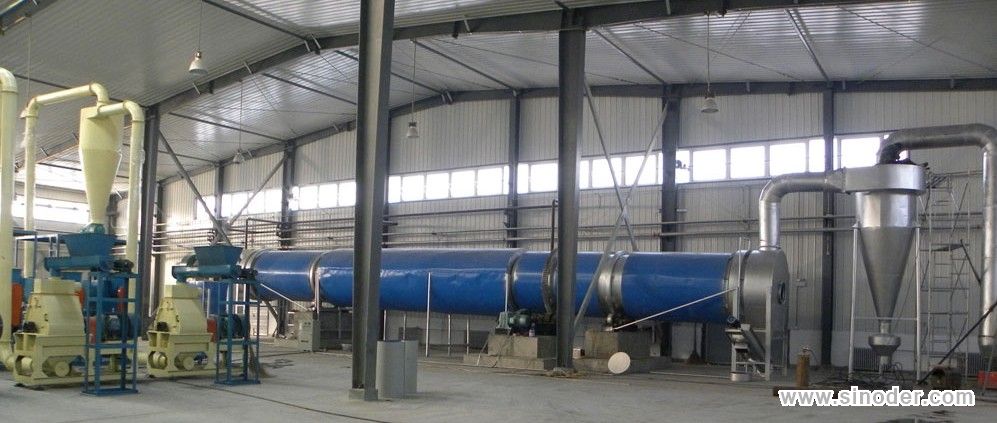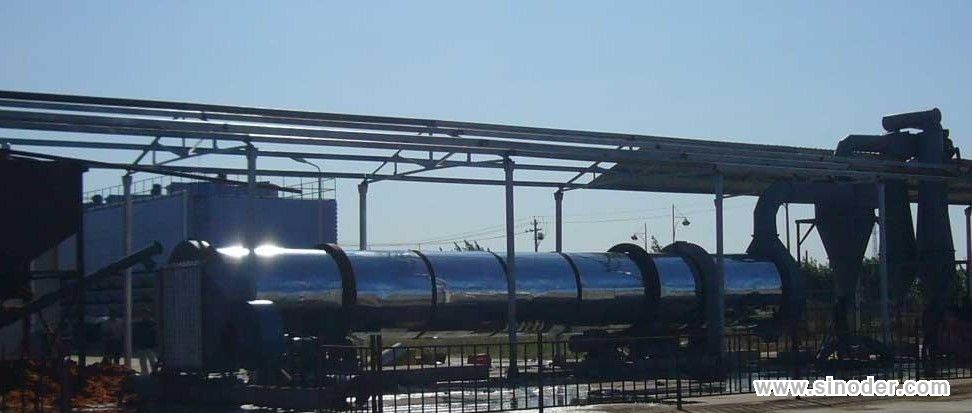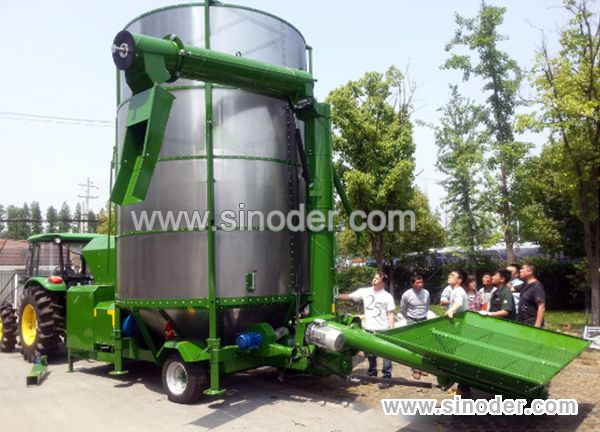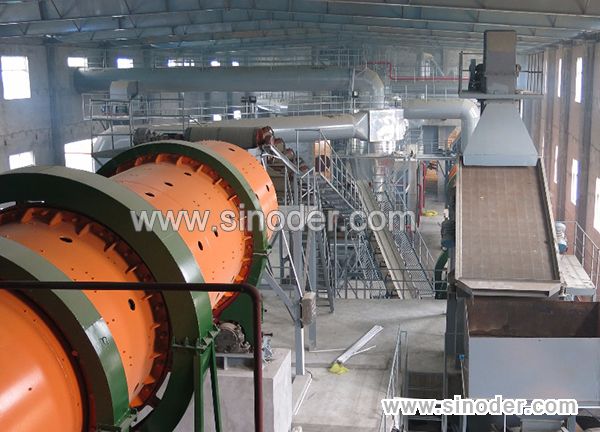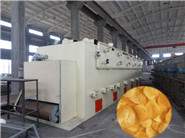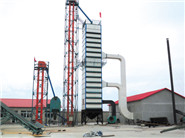Sinoder will not only engineer the
rotary drum dryer for the specific application, but can also design, fabricate, and supply all of the component parts of the dehydration system including the burner, furnace, cyclone, fan, ductwork, conveyors, truck dump stations, feed hoppers, and airlocks.
Construction :
Rotary Dryers are slightly inclined cylinder shell supported by two nos. riding rings(tyres) running on a set of support Rollers. Fabricated in carbon, stainless steel and carbon+Ebonite lined with flights or lifters are welded or bolted internally to produce cascade of particles falling through hot gas stream. The mechanical lifting of the material allows to dry materials from filter cake to coarse minerals also helps in breaking-up lumps for uniform drying. The length of the drum may range from 4 to 10 times its diameter. Normal dryers the length will be 10 times its diameter and usually operate with 12 to 15% of their volume filled with the material.
End closer seals :
Both the ends of the drum are closed by steel fabricated hoods with air inlet/outlet chute with suitable seals in between the hood and the dryer drum. If slight ingress of air is acceptable simple felt seals can be used, bolted to a stationary end plate and positioned in between to seal rings. If air is unacceptable spring loaded friction seals are provided, where two finished metal surfaces are in contact under spring pressure. The sealing segments require regular adjustment and replacement.
Operation :
Dying is achieved by passing the material being processed through the horizontal rotating drum which also passes a current of hot air. Lifters or flights fitted internal surface of the drum lift and cascade the material through the hot air stream. The hot air steam can be directed through the cylinder either in the same direction as material (co-current) or in the opposite direction (counter current). Counter current applications are more efficient in terms of energy input but give rise to high product temperature, with the associated handling problem.
Air Heater :
The air may be heated indirectly by means of thermal oil or electricity-heated or steam heat exchanger.
Air Handling System :
In Rotary Dryer the flow of air is induced by a centrifugal fan located up stream of the air heater with filter at fan inlet. The exhaust air is removed either by a second centrifugal fan at the outlet or direct at outlet end of the dryer and through dust collector.
The exhaust gas stream from any drying operation inevitable include a significant amount of fine particles and these fine particles may be collected by passing the gases through cyclones or bag filter or wet scrubber or any combination on any or all of these, depending upon the nature and quantity of dust involved.
Process Control :
For any system there is relationship between the product moisture content and exhaust air temperature. Therefore product moisture can be controlled through the control of exhaust air temperature by regulating the flow of heat by means of temperature controller with a thermocouple located in the exhaust air duct. The optimum performance can be achieved if the dryer operates as per design conditions and with constant evaporative load. Any variation in evaporation load due to variation in feed rate or moisture content results in a corresponding variation in exhaust temperature which in turn increases or decreases air heater output and it raises or lowers the inlet air temperature. Thus evaporative load may be controlled by measurement of inlet air temperature using controller with temperature probe located in the inlet air duct and output signal to a variable rate feeder, which generally provides control of the drying system.
Dust Collecting Equipments :
Exhaust gases from Rotary Dryer contain certain proportion of very fine dust which becomes entrained in the air stream while in contact with materials being dried. A Dust collector of high efficiency cyclone type is used. Even the most efficient cyclone type dust collector will not collect all the dust. Very fine particles which escape the dry collector may be recovered by mean of a wet collector in the form of sludge or alternatively by means of a Bag Filter.
Rotary Drum Dryer Working System in Site
Heat Source Fuel Burner
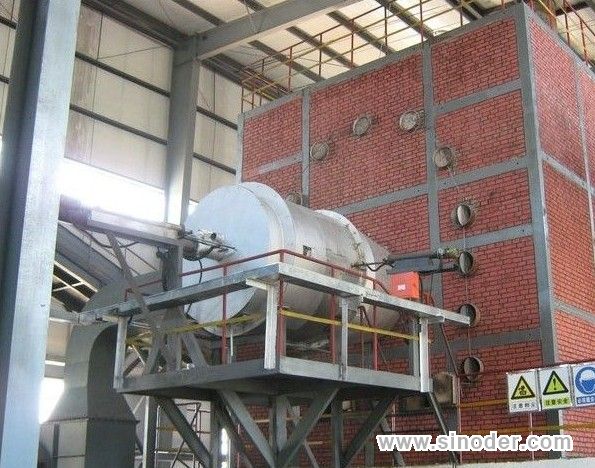 Fuel Burner Furnace systme:
Fuel Burner Furnace systme:
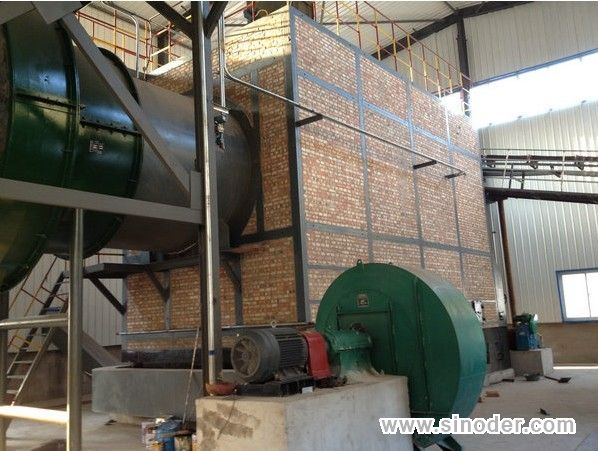 Rotary Drum Dryer Working Site
Rotary Drum Dryer Working Site
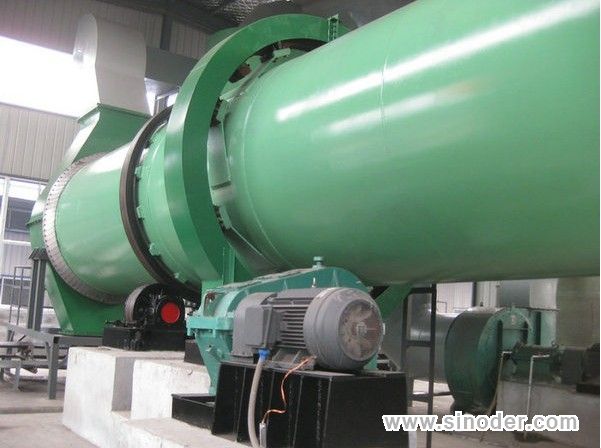 Cyclone dust collecting system
Cyclone dust collecting system
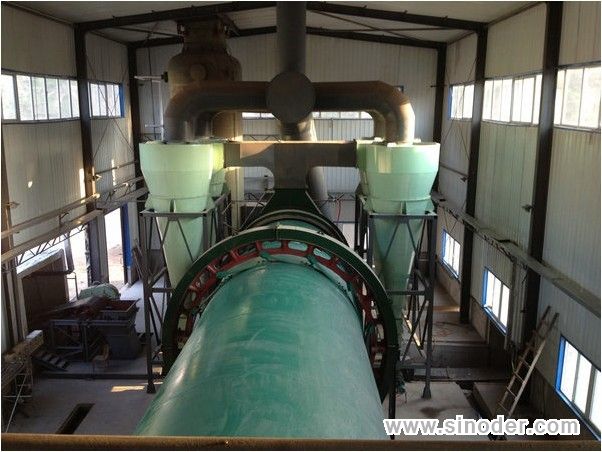
The dryers can be fired by any conventional fuel system, but there is a remarkable advantage in using a solid fuel system. These solid fuel systems can operate on a number of alternative fuel materials (bagasse, charcoal, coal, corn, corncobs, dried peat moss, dried wood chips, horse manure, paper, sawdust, shavings, thermoplastics, thermosetting plastics, wood flour, wood waste, etc.), reducing fuel cost to a fraction of that of conventional fuel. Combustible materials being dried can be routed to a solid fuel burner and provide an energy source for the dryer. This concept is called closed loop drying.
The dryers feature single and multi-pass technology that moves materials through the drum in an air stream created by the dryer induced-draft fan. The multiple passes are mechanically interlocked to rotate at the same speed. As the drum rotates, the product is repeatedly showed into the dryer hot gas.
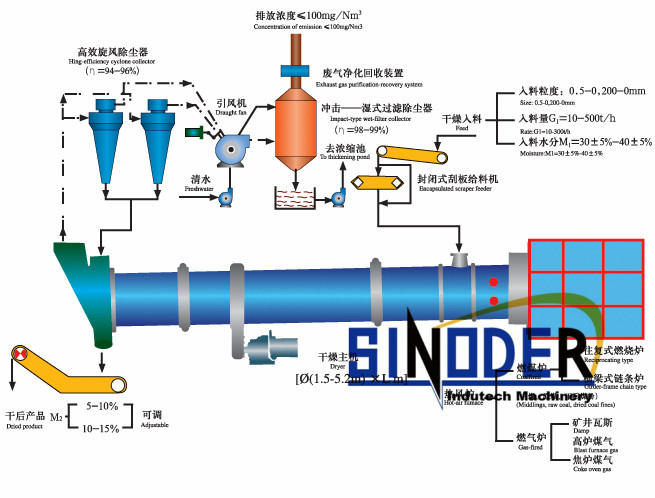 Product Diversity
Product Diversity
The Sinoder's dehydration systems can serve a number of industrial applications. These dehydration systems can dry a wide variety of products including, but not limited to: activated carbon, aluminum, aluminum scrap, alfalfa, animal bedding, antibiotic residues, apple pomace, bagasse, bark, bakery waste, bananas, blood meal, bone, brewers grain, bulgur wheat, canning by-products, cattle feed, citrus pulp, charcoal, chocolate powder, coastal bermuda, coffee grounds, compost, corn cobs, crab scraps, distiller's grain, feather meal, fish scrap, fruit waste, hemp, herring meal, iron fillings, iron oxide, kaolin, kelp, lactose, leafy drug plants, lignite, marigold flowers, mustard seed, paper pulp, peat moss, pharmaceuticals, potato products, sawdust, sludges, seaweed, sodium bicarbonate, soybean meal, tobacco, wood shavings and wood chips.


